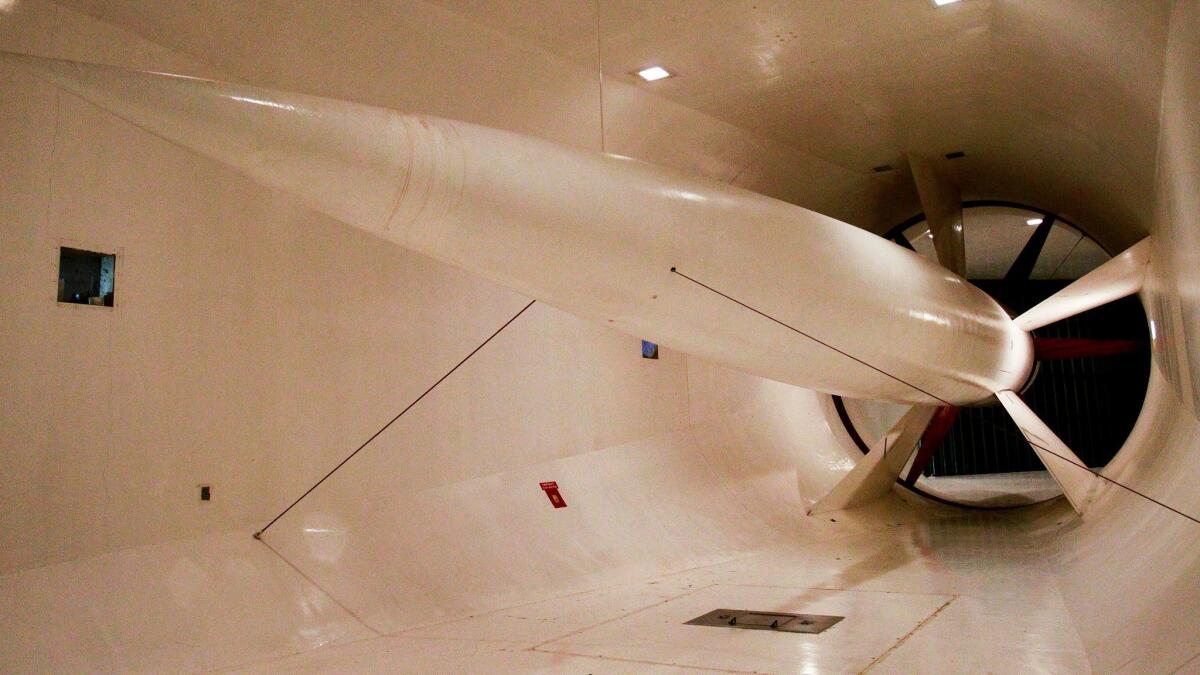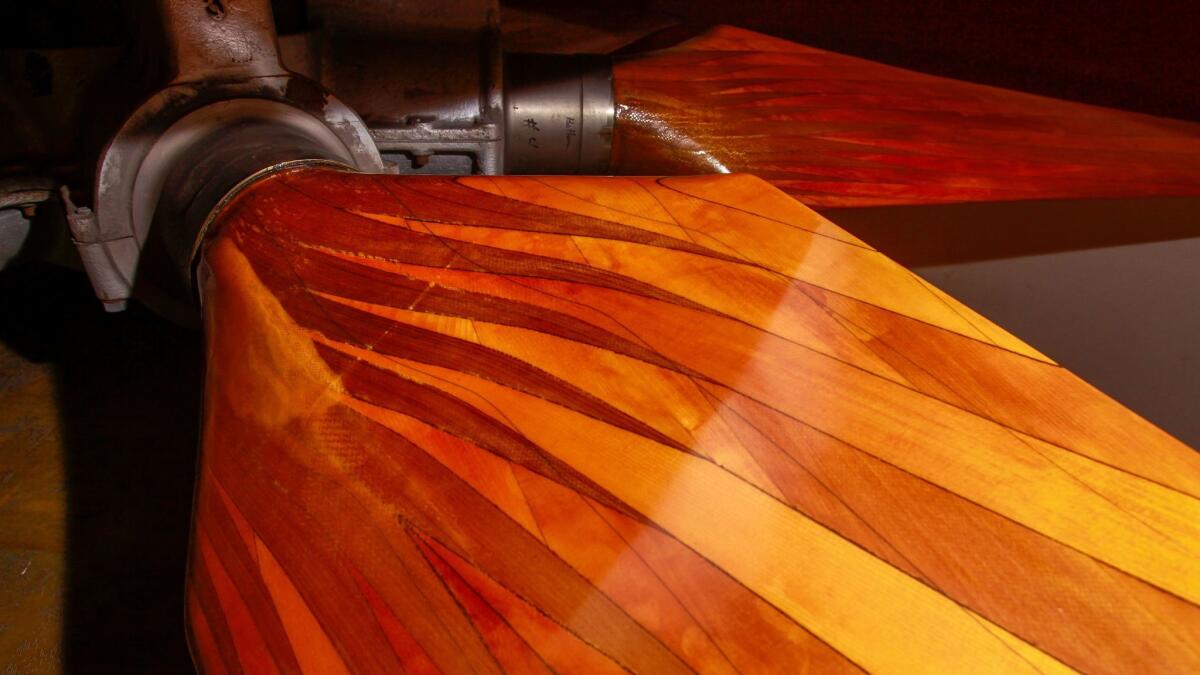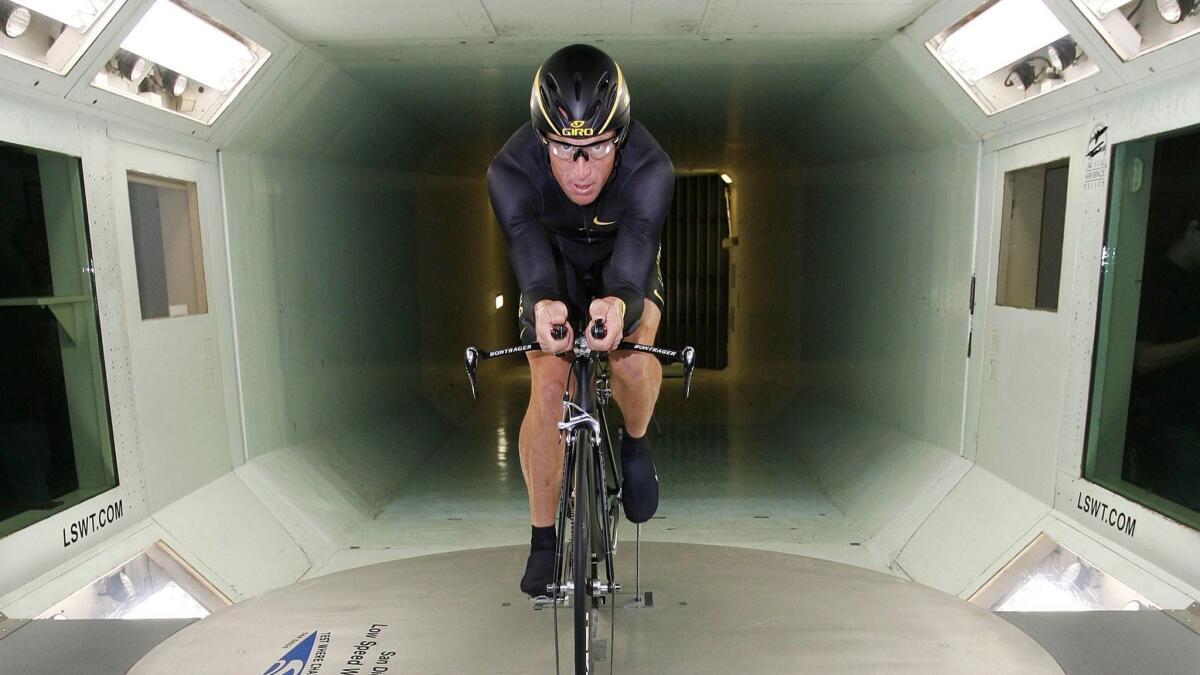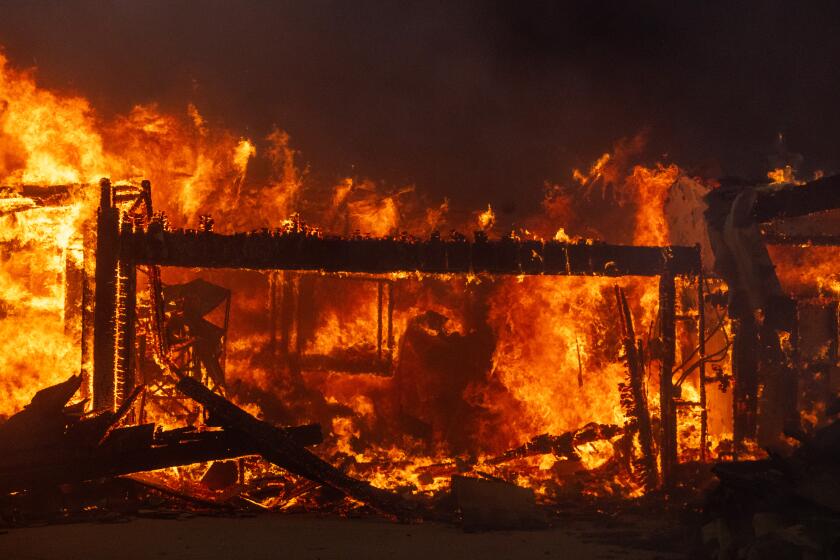Defying predictions, wind tunnels find new customers in autos, athletics — even fast food

- Share via
Reporting from San Diego — Wind tunnels were supposed to be put out of work by now.
In 1947, when the Consolidated Vultee Aircraft Corp. opened its wind tunnel alongside the San Diego Airport, such facilities were really the only way to verify whether a proposed aircraft design would behave as expected.
Scale models of a complete aircraft or its parts were placed inside to understand how air moved around them and measure aspects such as lift and drag.
The San Diego wind tunnel was used to test the aerodynamics of every Boeing jetliner, from the 707 to the 787, various fighter jets and the Space Shuttle.
As computational fluid dynamics evolved in the 1980s, it was assumed most performance predictions could be done cheaper and more precisely by a computer.
But against all odds, wind tunnels have hung around — and a few new ones are being built.
It turns out that while computer modeling keeps improving, it still has some “unseen corners,” said Dave Massey, the San Diego wind tunnel’s general manager.
“Almost all the engineers want a confirmation,” he said. “We’re there to verify it in real conditions.”
But to survive, the tunnels still needed to find new customers to replace consolidating aerospace companies.
That includes high-performance athletes seeking ways to cut down on drag. Even such random objects as solar panel racks get tested for wind resistance, or the adhesive for a large soft drink cup a fast-food chain wanted to attach to its restaurant windows.
While some wind tunnels have closed, there were at least 89 facilities in the U.S. still used for aeronautical testing in 2008, according to the most recent survey done by NASA.
That includes the world’s largest tunnel, located at NASA’s Ames Research Center near Mountain View, Calif., and Northrop Grumman Corp.’s facility in Hawthorne.
Automakers have embraced wind tunnel testing in their obsession over aerodynamic efficiency and wind noise. In February, Ford Motor Co. announced that it would construct a new complex near a test facility in Michigan.
The San Diego wind tunnel went through several ownership changes as the aerospace industry consolidated. It was slated for demolition in the 1990s.
Instead, the tunnel was purchased in 2006 by its current owner, the San Diego Air and Space Museum. It is now formally known as the San Diego Air and Space Technology Center.
The facility, which has nine employees, has largely remained the same through its 70 years. Tests can run as short as two hours, or for several months.
Some tunnels generate winds of more than five times the speed of sound. The San Diego tunnel is of the low-speed variety, with a maximum of 270 mph. Its original 1940s-era Westinghouse electric motor powers a spruce-bladed fan that is 20 feet in diameter. The blades were replaced in 1986, after an errant scale model broke loose and crashed into them.
Wind is propelled through a wall of slim metal boards called turning vanes, which are separated by only about a foot and a half.

From there, the air is pushed into a triangular room before blasting through a honeycomb wall into the variegated green, blue and white testing section that is 8 feet tall, 12 feet wide and 15 feet long.
Large windows give engineers in the adjoining control room a direct view of how tests are progressing, along with video camera feeds that are displayed on the mission control-esque setup outside the chamber.
The engineers collect data by attaching sophisticated sensors inside the models, gathering direct measurements for aspects such as wind speed, drag and lift.
The wind tunnel began to branch out in 2003 when it started testing athletes and their equipment, particularly in racing sports such as cycling and luge in which fractions of a second can make a difference.
The facility has framed photos of the many athletes who have come through its doors, including cyclists Lance Armstrong and Kristin Armstrong. Sports now make up about 25% of the wind tunnel’s business.

Athletes test positions and equipment, such as bicycles, luges, bobsleds, helmets, goggles and even suits, searching for the combination with the lowest drag, said Stephen Ryle, engineering manager.
Another quarter of the wind tunnel’s business is what Massey calls “one-offs” — such as an 8-foot-tall artificial pine tree that was set to camouflage a cell tower, a scale model of Qualcomm Stadium and camping tents.
But the wind tunnel’s bread and butter remains aerospace and aviation.
The San Diego wind tunnel’s niche in the subsonic space also enables it to focus on ground effects as well as takeoff and landing capabilities.
The facility has tested the Global Hawk drone, the Tomahawk cruise missile and F-16 fighter jet. Other aircraft can’t be named because of confidentiality agreements.
Often, the wind tunnel will test programs or aircraft years before they make a public debut — if they ever do.
“We get to see a lot of stuff here that’s kind of far off into the future,” Ryle said.
Aerospace engineers now see wind tunnels as a complement to and verification of computer modeling data, said J. Gordon Leishman, a professor in the aerospace engineering department at Embry-Riddle Aeronautical University.
Newer wind tunnels, such as one that is set to open at Embry-Riddle next year, are utilizing cutting-edge technology that can measure the most intricate details of air flow to validate that computational methods are giving “the right answer for the right reason,” he said.
Computers are good at predicting outcomes, Ryle said, “but they’re not perfect.”
Computer models can easily whittle down design possibilities prior to building small scale models for physical tests in wind tunnels.
But tunnels can generate more data points faster than computer models. Adjusting a variable such as wind speed or angle requires only a few simple changes to the model or controls in a tunnel, while computational methods would require starting over with a whole new model, Ryle said.
Tunnels are also still better at collecting measurements of when air flow separates around a wing, which reduces lift and can cause the plane to stall, Ryle said.
“That’s the thing about the wind tunnel,” he said. “We simulate the real thing.”
Twitter: @smasunaga
ALSO
A new generation of giant rockets is about to blast off
A flameout in the Mojave shows how hard it can be to finance rocket-ship start-ups
As your Roomba cleans your floors, it’s gathering maps of your house
More to Read
Inside the business of entertainment
The Wide Shot brings you news, analysis and insights on everything from streaming wars to production — and what it all means for the future.
You may occasionally receive promotional content from the Los Angeles Times.











